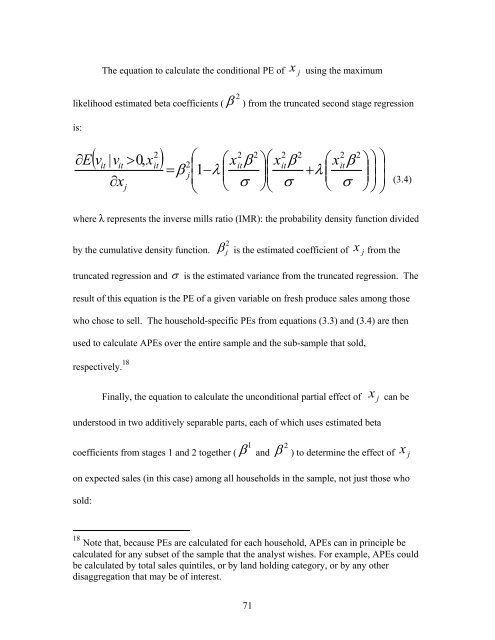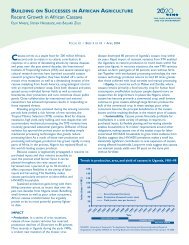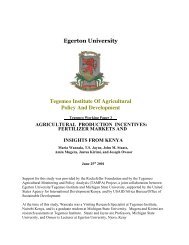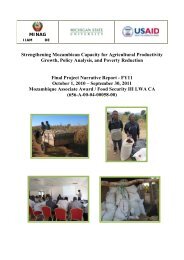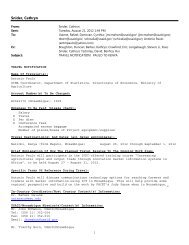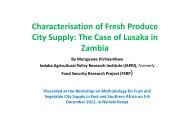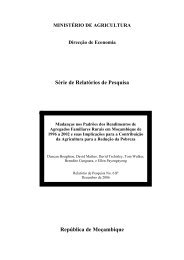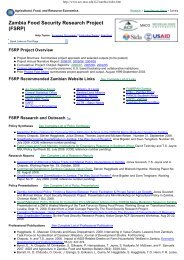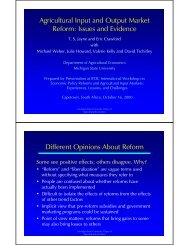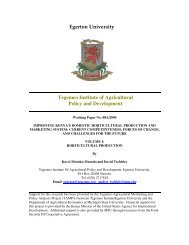Thesis Re-print: Does Selling Fruits or Vegetables - Department of ...
Thesis Re-print: Does Selling Fruits or Vegetables - Department of ...
Thesis Re-print: Does Selling Fruits or Vegetables - Department of ...
Create successful ePaper yourself
Turn your PDF publications into a flip-book with our unique Google optimized e-Paper software.
The equation to calculate the conditional PE <strong>of</strong> j x using the maximum<br />
2<br />
likelihood estimated beta coefficients ( ) from the truncated second stage regression<br />
is:<br />
E<br />
2<br />
vv0, x <br />
it<br />
2 2 2 2 2 2<br />
| <br />
<br />
it it 2<br />
x<br />
it<br />
x <br />
it<br />
xit<br />
<br />
<br />
<br />
j 1 <br />
<br />
<br />
<br />
<br />
<br />
<br />
<br />
<br />
<br />
<br />
x<br />
<br />
j <br />
<br />
<br />
71<br />
(3.4)<br />
where λ represents the inverse mills ratio (IMR): the probability density function divided<br />
by the cumulative density function.<br />
2<br />
j is the estimated coefficient <strong>of</strong> x j from the<br />
truncated regression and is the estimated variance from the truncated regression. The<br />
result <strong>of</strong> this equation is the PE <strong>of</strong> a given variable on fresh produce sales among those<br />
who chose to sell. The household-specific PEs from equations (3.3) and (3.4) are then<br />
used to calculate APEs over the entire sample and the sub-sample that sold,<br />
respectively. 18<br />
Finally, the equation to calculate the unconditional partial effect <strong>of</strong> x j can be<br />
understood in two additively separable parts, each <strong>of</strong> which uses estimated beta<br />
1<br />
coefficients from stages 1 and 2 together ( and<br />
2<br />
) to determine the effect <strong>of</strong> x j<br />
on expected sales (in this case) among all households in the sample, not just those who<br />
sold:<br />
18 Note that, because PEs are calculated f<strong>or</strong> each household, APEs can in principle be<br />
calculated f<strong>or</strong> any subset <strong>of</strong> the sample that the analyst wishes. F<strong>or</strong> example, APEs could<br />
be calculated by total sales quintiles, <strong>or</strong> by land holding categ<strong>or</strong>y, <strong>or</strong> by any other<br />
disaggregation that may be <strong>of</strong> interest.


